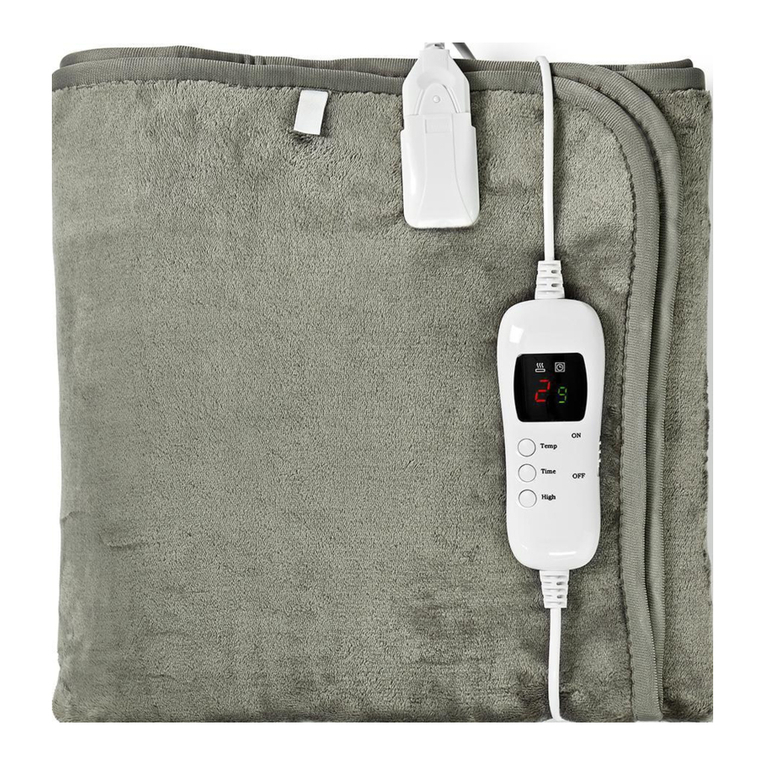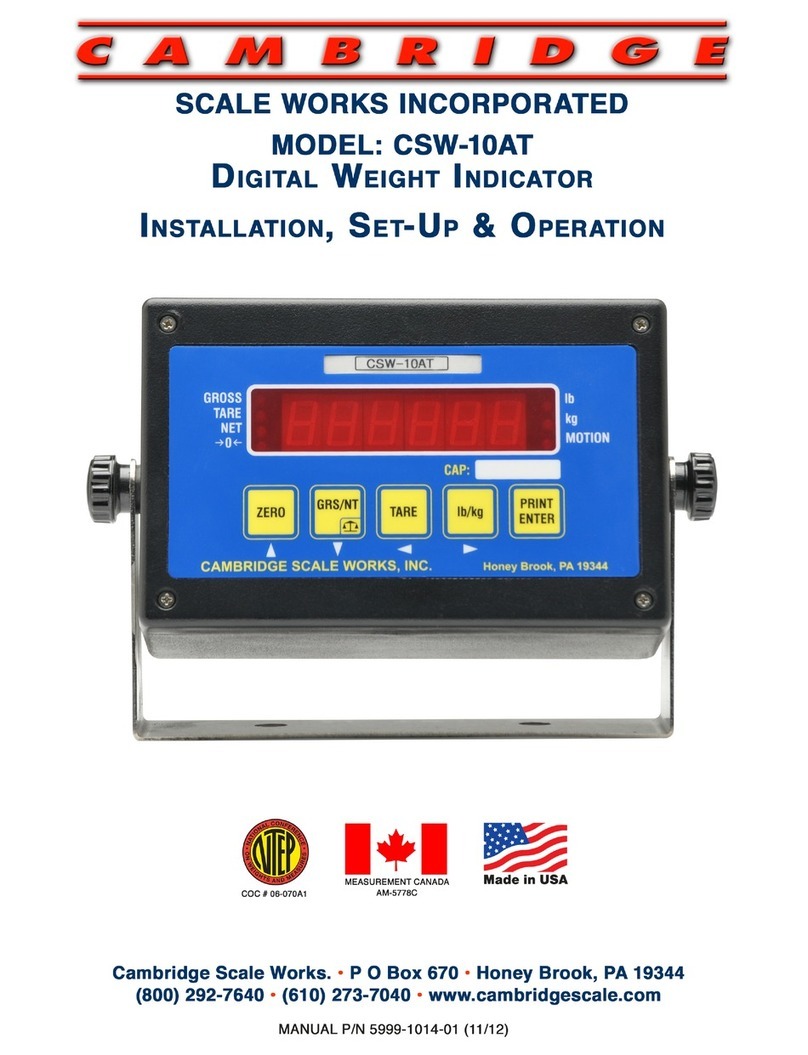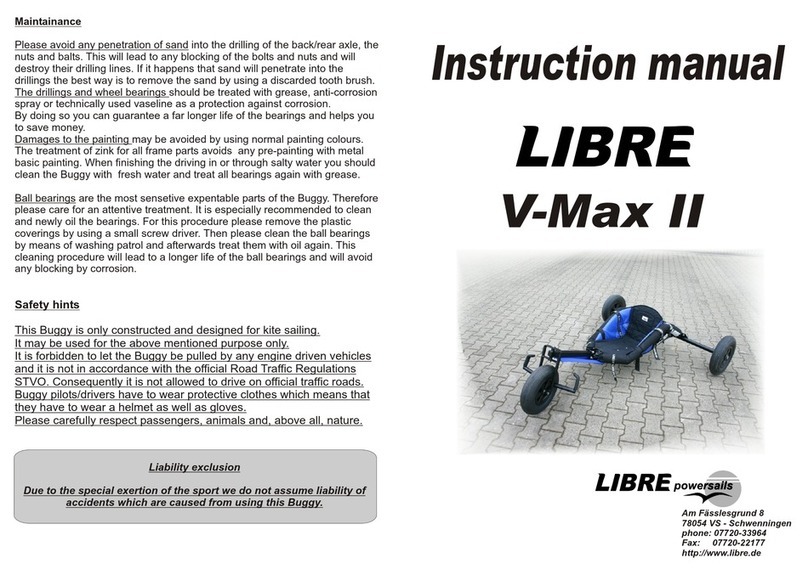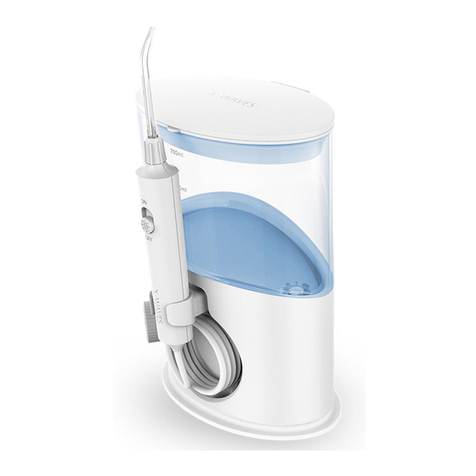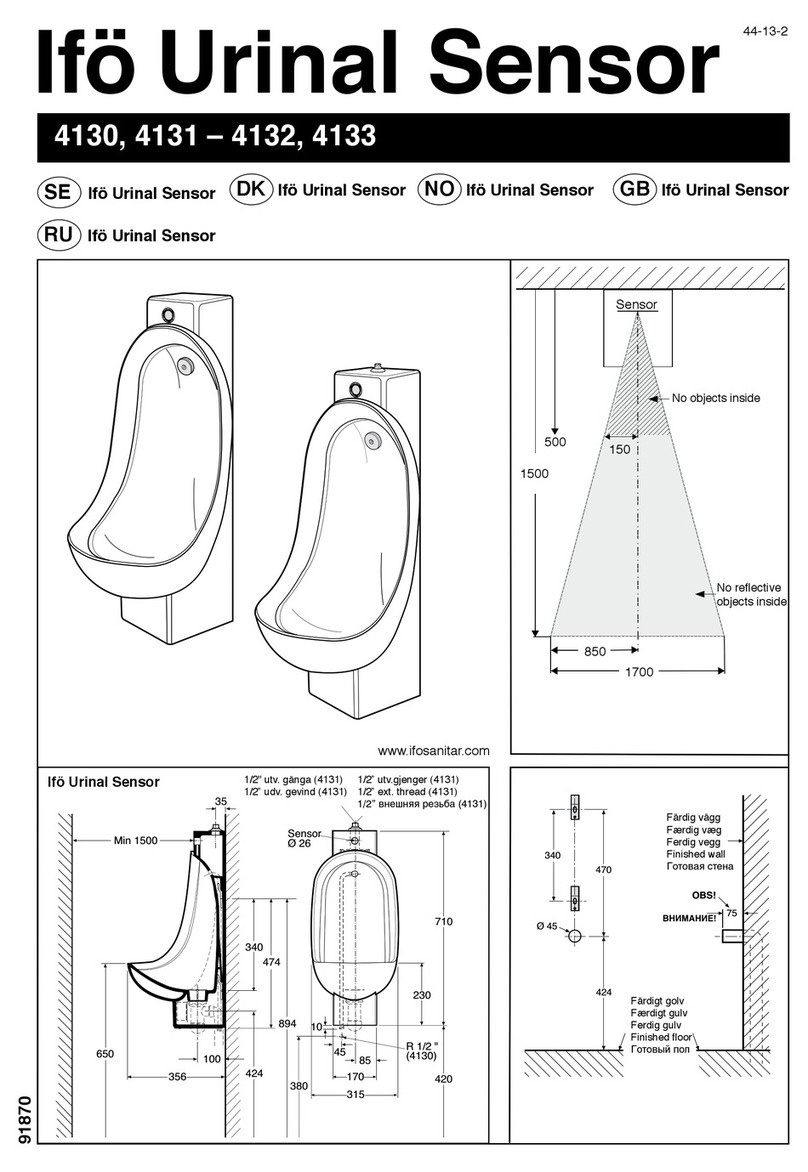Ronde & Schwarz R&S NRP18S Series User manual

R&S®NRP18S-xx
High-Power Three-Path Diode Power
Sensors
User Manual
1178368602
Version 07
(;ÜTä2)

This manual describes the following high-power three-path diode power sensors with firmware version FW
02.30 and later:
●R&S®NRP18S-10 (1424.6721K02)
●R&S®NRP18S-20 (1424.6738K02)
●R&S®NRP18S-25 (1424.6744K02)
© 2022 Rohde & Schwarz GmbH & Co. KG
Muehldorfstr. 15, 81671 Muenchen, Germany
Phone: +49 89 41 29 - 0
Email: [email protected]
Internet: www.rohde-schwarz.com
Subject to change – data without tolerance limits is not binding.
R&S® is a registered trademark of Rohde & Schwarz GmbH & Co. KG.
Trade names are trademarks of the owners.
1178.3686.02 | Version 07 | R&S®NRP18S-xx
Throughout this manual, products from Rohde & Schwarz are indicated without the ® symbol, for example R&S®NRP18S-10 is
abbreviated as R&S NRP18S-10.

Contents
R&S®NRP18S-xx
3User Manual 1178.3686.02 ─ 07
Contents
1 Safety and regulatory information........................................................7
1.1 Safety instructions........................................................................................................7
1.2 Labels on the product...................................................................................................8
1.3 Warning messages in the documentation.................................................................. 8
2 Welcome................................................................................................. 9
2.1 Documentation overview..............................................................................................9
2.1.1 Getting started manual....................................................................................................9
2.1.2 User manuals.................................................................................................................. 9
2.1.3 Tutorials...........................................................................................................................9
2.1.4 Instrument security procedures.......................................................................................9
2.1.5 Basic safety instructions..................................................................................................9
2.1.6 Data sheets and brochures........................................................................................... 10
2.1.7 Release notes and open source acknowledgment (OSA)............................................ 10
2.1.8 Application notes, application cards, white papers, etc.................................................10
2.2 Key features.................................................................................................................10
3 Preparing for use................................................................................. 12
3.1 Unpacking and checking............................................................................................12
3.2 Choosing the operating site.......................................................................................12
3.3 Considerations for test setup.................................................................................... 13
3.4 Connecting to a DUT...................................................................................................13
3.5 Powering the power sensor....................................................................................... 14
3.6 Connecting a cable to the host interface..................................................................15
3.7 Connecting to a controlling host...............................................................................15
3.7.1 Computer...................................................................................................................... 15
3.7.2 Base unit....................................................................................................................... 18
4 Power sensor tour................................................................................19
4.1 RF connector............................................................................................................... 19
4.2 Status information...................................................................................................... 20
4.3 Host interface.............................................................................................................. 20
4.4 Trigger I/O connector..................................................................................................20

Contents
R&S®NRP18S-xx
4User Manual 1178.3686.02 ─ 07
5 Operating concepts............................................................................. 22
5.1 R&S NRP Toolkit..........................................................................................................22
5.1.1 Versions and downloads............................................................................................... 22
5.1.2 System requirements.................................................................................................... 22
5.1.3 R&S NRP Toolkit for Windows...................................................................................... 23
5.2 Remote control............................................................................................................24
5.3 R&S NRPV....................................................................................................................25
5.4 R&S Power Viewer...................................................................................................... 26
5.5 R&S Power Viewer Mobile..........................................................................................28
5.6 R&S NRX...................................................................................................................... 28
6 Firmware update.................................................................................. 30
6.1 Hardware and software requirements.......................................................................30
6.2 Updating the firmware................................................................................................ 30
6.2.1 Using the Firmware Update for NRP Family program...................................................30
6.2.2 Using remote control..................................................................................................... 32
7 Replacing an R&S NRP‑Zxx with an R&S NRP18S-xx ..................... 34
7.1 Important difference................................................................................................... 34
7.2 Prerequisites............................................................................................................... 34
8 Remote control commands.................................................................35
8.1 Conventions used in SCPI command descriptions................................................. 35
8.2 Notations......................................................................................................................36
8.3 Common commands...................................................................................................37
8.4 Preparing for the measurement.................................................................................41
8.4.1 Selecting the reference source..................................................................................... 41
8.4.2 Selecting a measurement path..................................................................................... 41
8.4.3 Selecting a measurement mode................................................................................... 42
8.4.4 Configuring the measured values................................................................................. 43
8.5 Controlling the measurement.................................................................................... 44
8.5.1 Starting and ending a measurement............................................................................. 45
8.5.2 Triggering...................................................................................................................... 46
8.5.3 Controlling the measurement results............................................................................ 48
8.5.4 Interplay of the controlling mechanisms........................................................................49

Contents
R&S®NRP18S-xx
5User Manual 1178.3686.02 ─ 07
8.5.5 Configuring the trigger...................................................................................................54
8.6 Configuring results..................................................................................................... 59
8.6.1 Setting the power unit................................................................................................... 59
8.6.2 Setting the result format................................................................................................ 60
8.7 Configuring the measurement modes...................................................................... 61
8.7.1 Continuous average measurement............................................................................... 61
8.7.2 Burst average measurement.........................................................................................65
8.7.3 Timeslot measurement..................................................................................................66
8.7.4 Trace measurement...................................................................................................... 68
8.8 Configuring basic measurement parameters...........................................................73
8.8.1 Configuring auto averaging........................................................................................... 73
8.8.2 Setting the frequency.................................................................................................... 77
8.8.3 Excluding intervals........................................................................................................ 77
8.8.4 Configuring corrections................................................................................................. 78
8.9 Querying measurement results................................................................................. 94
8.10 Calibrating, zeroing.....................................................................................................95
8.11 Testing..........................................................................................................................97
8.12 Configuring the system.............................................................................................. 98
8.12.1 Configuring general functions....................................................................................... 98
8.13 Using the status register.......................................................................................... 106
8.13.1 General status register commands............................................................................. 107
8.13.2 Reading the CONDition part....................................................................................... 107
8.13.3 Reading the EVENt part..............................................................................................108
8.13.4 Controlling the ENABle part........................................................................................ 108
8.13.5 Controlling the negative transition part........................................................................108
8.13.6 Controlling the positive transition part......................................................................... 109
9 Performing measurement tasks - programming examples............110
9.1 Performing the simplest measurement...................................................................110
9.2 Performing the fastest measurement in continuous average mode.................... 110
9.2.1 Untriggered fast unchopped continuous average measurement.................................110
9.2.2 Triggered fast unchopped continuous average measurement.................................... 112
9.3 Performing a buffered continuous average measurement................................... 113
9.4 Performing trace measurements............................................................................. 115

Contents
R&S®NRP18S-xx
6User Manual 1178.3686.02 ─ 07
9.5 Trace measurement with synchronization to measurement complete................ 116
10 Remote control basics.......................................................................118
10.1 Remote control interfaces and protocols............................................................... 118
10.1.1 USB interface.............................................................................................................. 118
10.2 Status reporting system........................................................................................... 119
10.2.1 Overview......................................................................................................................119
10.2.2 Device status register..................................................................................................122
10.2.3 Questionable status register....................................................................................... 123
10.2.4 Standard event status and enable register (ESR, ESE)............................................. 126
10.2.5 Operation status register.............................................................................................127
11 Troubleshooting.................................................................................135
11.1 Displaying status information..................................................................................135
11.2 Performing a selftest................................................................................................ 135
11.3 Problems during a firmware update........................................................................135
11.4 Contacting customer support..................................................................................136
12 Transporting....................................................................................... 137
13 Maintenance, storage and disposal................................................. 138
13.1 Regular checks..........................................................................................................138
13.2 Cleaning..................................................................................................................... 139
13.3 Storage.......................................................................................................................139
13.4 Disposal..................................................................................................................... 139
List of commands.............................................................................. 141
Index....................................................................................................146

Safety and regulatory information
R&S®NRP18S-xx
7User Manual 1178.3686.02 ─ 07
1 Safety and regulatory information
The product documentation helps you use the product safely and efficiently. Follow the
instructions provided here and in the following chapters.
Intended use
The power sensors are intended for accurate and uncomplicated power measurements
in production, R&D and calibration labs as well as for installation and maintenance
tasks. The supported base units are listed in the data sheet. Observe the operating
conditions and performance limits stated in the data sheet.
Target audience
The target audience is developers and technicians. The required skills and experience
in power measurements depend on the used operating concept.
The power sensor is designed for high-power applications.
Where do I find safety information?
Safety information is part of the product documentation. It warns you of potential dan-
gers and gives instructions on how to prevent personal injury or damage caused by
dangerous situations. Safety information is provided as follows:
●In Chapter 1.1, "Safety instructions", on page 7. The same information is provi-
ded in many languages as printed "Safety Instructions". The printed "Safety
Instructions" are delivered with the product.
●Throughout the documentation, safety instructions are provided when you need to
take care during setup or operation.
1.1 Safety instructions
Products from the Rohde & Schwarz group of companies are manufactured according
to the highest technical standards. To use the products safely, follow the instructions
provided here and in the product documentation. Keep the product documentation
nearby and offer it to other users.
Use the product only for its intended use and within its performance limits. Intended
use and limits are described in the product documentation such as the data sheet,
manuals and the printed "Safety Instructions". If you are unsure about the appropriate
use, contact Rohde & Schwarz customer service.
Using the product requires specialists or specially trained personnel. These users also
need sound knowledge of at least one of the languages in which the user interfaces
and the product documentation are available.
Never open the casing of the product. Only service personnel authorized by
Rohde & Schwarz are allowed to repair the product. If any part of the product is dam-
aged or broken, stop using the product. Contact Rohde & Schwarz customer service at
http://www.customersupport.rohde-schwarz.com.
Safety instructions

Safety and regulatory information
R&S®NRP18S-xx
8User Manual 1178.3686.02 ─ 07
Choosing the operating site
Only use the product indoors. The product casing is not waterproof.
Observe the ambient conditions such as altitude, operating temperature and climatic
loads; see the data sheet.
Meaning of safety labels
Safety labels on the product warn against potential hazards.
Potential hazard
Read the product documentation to avoid personal injury or product damage.
Electrical hazard
Indicates live parts. Risk of electric shock, fire, personal injury or even death.
1.2 Labels on the product
Labels on the product inform about:
●Personal safety
See "Meaning of safety labels" on page 8.
●Environment safety
See Table 1-1.
●Identification of the product
The name plate at the rear side of the power sensor contains the serial number
that uniquely identifies the power sensor.
Table 1-1: Labels regarding environment safety
Labeling in line with EN 50419 for disposal of electrical and electronic equipment after the prod-
uct has come to the end of its service life.
For more information, see "Disposing electrical and electronic equipment" on page 139.
1.3 Warning messages in the documentation
A warning message points out a risk or danger that you need to be aware of. The sig-
nal word indicates the severity of the safety hazard and how likely it will occur if you do
not follow the safety precautions.
NOTICE
Potential risks of damage. Could result in damage to the supported product or to other
property.
Warning messages in the documentation

Welcome
R&S®NRP18S-xx
9User Manual 1178.3686.02 ─ 07
2 Welcome
This chapter provides an overview of the user documentation and an introduction to
the R&S NRP18S-xx .
2.1 Documentation overview
This section provides an overview of the R&S NRP18S-xx user documentation. Unless
specified otherwise, you find the documents on the R&S NRP18S-xx product page at:
www.rohde-schwarz.com/product/nrp18s-xx
2.1.1 Getting started manual
Introduces the R&S NRP18S-xx and describes how to set up and start working with the
product. Includes basic operations and general information, e.g. safety instructions,
etc. A printed version is delivered with the power sensor.
2.1.2 User manuals
Contains the description of all instrument modes and functions. It also provides an
introduction to remote control, a complete description of the remote control commands
with programming examples, and information on maintenance and interfaces. Includes
the contents of the getting started manual.
2.1.3 Tutorials
Tutorials offer guided examples and demonstrations on operating the R&S NRP18S-
xx . They are provided on the product page of the internet.
2.1.4 Instrument security procedures
Deals with security issues when working with the R&S NRP18S-xx in secure areas. It
is available for download on the Internet.
2.1.5 Basic safety instructions
Contains safety instructions, operating conditions and further important information.
The printed document is delivered with the instrument.
Documentation overview

Welcome
R&S®NRP18S-xx
10User Manual 1178.3686.02 ─ 07
2.1.6 Data sheets and brochures
The data sheet contains the technical specifications of the R&S NRP18S-xx . It also
lists the firmware applications and their order numbers, and optional accessories.
The brochure provides an overview of the instrument and deals with the specific char-
acteristics.
www.rohde-schwarz.com/brochure-datasheet/nrp18s-xx
2.1.7 Release notes and open source acknowledgment (OSA)
The release notes list new features, improvements and known issues of the current
firmware version, and describe the firmware installation.
The "Open Source Acknowledgment" is provided on the user documentation CD-ROM,
included in the delivery. It contains verbatim license texts of the used open source soft-
ware.
www.rohde-schwarz.com/firmware/nrp_s_sn
2.1.8 Application notes, application cards, white papers, etc.
These documents deal with special applications or background information on particu-
lar topics.
www.rohde-schwarz.com/application/nrp18s-xx
2.2 Key features
The 3-path diode power sensors are members of the R&S NRP series power sensors
from Rohde & Schwarz.
They provide a high-speed USB interface that constitutes both the communication port
and the power supply connection.
The R&S NRP18S-xx power sensors are designed for high-power applications. Each
R&S NRP18S-xx power sensor is delivered with an upstream attenuator.
Key features

Welcome
R&S®NRP18S-xx
11User Manual 1178.3686.02 ─ 07
Figure 2-1: R&S NRP18S-10, R&S NRP18S-20 and R&S NRP18S-25 (from left)
To provide physically correct results, the sensor itself numerically compensates the
influence of the attenuator. Hence, the measurement output is not the power level that
is measured at the input port of the sensor. It represents the power level at the input of
the attenuator.
This numerical compensation of a two-port ("S-parameter device") connected
upstream is also implemented in R&S NRP power sensors that are delivered without
an attenuator. You can select any third-party attenuator, measure its S-parameters and
connect it upstream of the sensor in place of the supplied attenuator.
However, a precise measurement of the S-parameters is not trivial, and not all attenua-
tors are sufficiently stable. To enable high-precision power measurements with R&S
NRP18S‑xx power sensors, each included attenuator is highly stable and accurately
calibrated on site. The factory-provided calibration data is stored in the factory calibra-
tion data set of the sensor and includes the precisely determined S-parameter values.
At start-up of the power sensor, it automatically activates S-parameter correction based
on the stored S-parameters. You can change this default behavior using the S-parame-
ters tool included in the R&S NRP Toolkit, see Chapter 8.8.4.3, "S-parameter correc-
tion", on page 80.
●If you use the power sensor without an attenuator to increase sensitivity, disable S-
parameter correction.
●If you use the power sensor with a third-party attenuator, load its S-parameters and
define it as the active device.
For a detailed specification, refer to the data sheet and the brochure.
Key features

Preparing for use
R&S®NRP18S-xx
12User Manual 1178.3686.02 ─ 07
3 Preparing for use
Here, you can find basic information about setting up the product for the first time.
●Unpacking and checking.........................................................................................12
●Choosing the operating site.................................................................................... 12
●Considerations for test setup.................................................................................. 13
●Connecting to a DUT...............................................................................................13
●Powering the power sensor.....................................................................................14
●Connecting a cable to the host interface.................................................................15
●Connecting to a controlling host..............................................................................15
3.1 Unpacking and checking
1. Unpack the product carefully.
2. Retain the original packing material. Use it when transporting or shipping the prod-
uct later.
3. Using the delivery notes, check the equipment for completeness.
4. Check the equipment for damage.
If the delivery is incomplete or equipment is damaged, contact Rohde & Schwarz.
3.2 Choosing the operating site
Specific operating conditions ensure proper operation and avoid damage to the prod-
uct and connected devices. For information on environmental conditions such as ambi-
ent temperature and humidity, see the data sheet.
Electromagnetic compatibility classes
The electromagnetic compatibility (EMC) class indicates where you can operate the
product. The EMC class of the product is given in the data sheet.
●Class B equipment is suitable for use in:
– Residential environments
– Environments that are directly connected to a low-voltage supply network that
supplies residential buildings
●Class A equipment is intended for use in industrial environments. It can cause
radio disturbances in residential environments due to possible conducted and radi-
ated disturbances. It is therefore not suitable for class B environments.
If class A equipment causes radio disturbances, take appropriate measures to
eliminate them.
Choosing the operating site

Preparing for use
R&S®NRP18S-xx
13User Manual 1178.3686.02 ─ 07
3.3 Considerations for test setup
Give particular attention to the following aspects when handling power sensors.
Handling the R&S NRP18S‑xx power sensor
►CAUTION! Hot surfaces. Under certain conditions, the maximum surface tempera-
tures of the power sensor can exceed the limits defined in the EN 61010-1 stan-
dard, safety requirements for electrical equipment for measurement, control and
laboratory use.
Provide protection as follows:
a) Ensure that unintentional contact with the power sensor is impossible.
b) Wear heat-protective gloves when touching the power sensor after operation.
EMI impact on measurement results
Electromagnetic interference (EMI) can affect the measurement results.
To suppress electromagnetic radiation during operation:
●Use high-quality shielded cables, for example, double-shielded RF and interface
cables.
●Always terminate open cable ends.
●Ensure that connected external devices comply with EMC regulations.
Signal input and output levels
Information on signal levels is provided in the data sheet. Keep the signal levels within
the specified ranges to avoid damage to the product and connected devices.
The test limits specified on the name plate apply only if the power sensor is operated
together with the RF power attenuator supplied. If the power sensor is operated without
attenuator, the lower test limits of the R&S NRP18S power sensor apply, as specified
in the data sheet.
Preventing electrostatic discharge (ESD)
Electrostatic discharge is most likely to occur when you connect or disconnect a DUT.
►NOTICE! Electrostatic discharge can damage the electronic components of the
product and the device under test (DUT).
Ground yourself to prevent electrostatic discharge damage:
a) Use a wrist strap and cord to connect yourself to ground.
b) Use a conductive floor mat and heel strap combination.
3.4 Connecting to a DUT
For connecting the power sensor to a DUT, use the RF connector. See Chapter 4.1,
"RF connector", on page 19.
Connecting to a DUT

Preparing for use
R&S®NRP18S-xx
14User Manual 1178.3686.02 ─ 07
To connect to the DUT
1. Ensure that the RF connector of your DUT is compatible with the RF connector of
the power sensor or attenuator.
See Table 4-1.
2. Inspect both RF connectors carefully. Look for metal particles, contaminants and
defects.
If either RF connector is damaged, do not proceed, because the risk of damaging
the mating connector is too high.
See also Chapter 13.1, "Regular checks", on page 138.
3. Insert the RF connector straight into the RF output of your DUT. Take care not to tilt
it.
180
4. NOTICE! Risk of damaging the center pin of the RF connector. Only rotate the hex
nut of the RF connector. Never rotate the power sensor itself.
Tighten the RF connector manually.
To disconnect from the DUT
►NOTICE! Risk of damaging the center pin of the RF connector. Always rotate only
the union nut of the RF connector. Never rotate the power sensor itself.
If the attenuator is attached to the power sensor:
a) Carefully loosen the union nut of the RF connector at the input of the attenua-
tor.
b) Remove the sensor with the attenuator.
Normally, it is not necessary or advisable to separate the attenuator from the sen-
sor if both are operated together.
► If you use the sensor without attenuator:
a) Carefully loosen the union nut at the RF connector of the sensor.
b) Remove the sensor.
3.5 Powering the power sensor
The electrical power for the R&S NRP18S-xx is supplied over the host interface. See
Chapter 4.3, "Host interface", on page 20.
Powering the power sensor

Preparing for use
R&S®NRP18S-xx
15User Manual 1178.3686.02 ─ 07
3.6 Connecting a cable to the host interface
For connecting the power sensor to a USB host, use the host interface. See Chap-
ter 4.3, "Host interface", on page 20.
Depending on the USB host, use one of the following cables:
●Computer or R&S NRP‑Z5 sensor hub:
R&S NRP‑ZKU cable with a USB connector
See Chapter 3.7.1, "Computer", on page 15.
●Base units or other supported Rohde & Schwarz instruments:
R&S NRP‑ZK6 cable with a push-pull type connector
See Chapter 3.7.2, "Base unit", on page 18.
These cables can be obtained in different lengths up to 5 meters. The order numbers
are provided in the data sheet.
To connect a cable to the host interface of the power sensor
1. Insert the screw-lock cable connector into the host interface connector of the power
sensor.
2. Tighten the union nut manually.
To disconnect the host interface of the power sensor
1. Loosen the union nut of the screw-lock cable connector.
2. Remove the cable.
3.7 Connecting to a controlling host
As a controlling host, you can use:
●Computer
●Base unit
For operating the power sensor, you can choose from various possibilities. For details,
see Chapter 5, "Operating concepts", on page 22.
3.7.1 Computer
If the controlling host is a computer, you can operate the power sensor in several ways.
For details, see Chapter 5, "Operating concepts", on page 22.
► Establish the connection using:
● Host interface
See Chapter 3.7.1.1, "Simple USB connection", on page 16.
See Chapter 3.7.1.2, "R&S NRP‑Z5 sensor hub setup", on page 16.
Connecting to a controlling host

Preparing for use
R&S®NRP18S-xx
16User Manual 1178.3686.02 ─ 07
3.7.1.1 Simple USB connection
All R&S NRP18S-xx power sensors can be connected to the USB interface of a com-
puter.
Required equipment
●R&S NRP18S-xx power sensor
●R&S NRP‑ZKU cable
Setup
123
46
5
7
Figure 3-1: Setup with an R&S
NRP
‑
ZKU cable
1 = Signal source
2 = Attenuator
3 = R&S NRP18S-xx power sensor
4 = Host interface connector
5 = R&S NRP‑ZKU cable
6 = USB connector
7 = Computer with installed VISA driver or R&S NRP Toolkit
Set up as shown in Figure 3-1.
1. Connect the R&S NRP‑ZKU cable to the power sensor. See "To connect a cable to
the host interface of the power sensor" on page 15.
2. Connect the R&S NRP‑ZKU cable to the computer.
3. NOTICE! Incorrectly connecting or disconnecting the power sensor can damage
the power sensor or lead to erroneous results. Ensure that you connect or discon-
nect the power sensor as described in Chapter 3.4, "Connecting to a DUT",
on page 13.
Connect the power sensor to the signal source.
4. On the computer, start a software application to view the measurement results.
See Chapter 5, "Operating concepts", on page 22.
3.7.1.2 R&S NRP‑Z5 sensor hub setup
The R&S NRP‑Z5 sensor hub (high-speed USB 2.0) can host up to four R&S NRP18S-
xx power sensors and provides simultaneous external triggering to all connected sen-
sors.
Connecting to a controlling host

Preparing for use
R&S®NRP18S-xx
17User Manual 1178.3686.02 ─ 07
Required equipment
●1 to 4 R&S NRP18S-xx power sensors
●1 R&S NRP‑ZK6 cable per sensor
●R&S NRP‑Z5 sensor hub with external power supply unit and USB cable
●BNC cables to connect the trigger input and trigger output signals (optional)
Setup
12 3 4
8
9
7
6
5
10
Figure 3-2: Setup with an R&S NRP-Z5 sensor hub
1 = External power supply unit
2 = Connect to AC power supply.
3 = Connect to computer with USB host interface.
4 = Optional: Connect to trigger source.
5 = Optional: Connect to triggered device.
6 = R&S NRP‑Z5 sensor hub
7 = Signal source (DUT)
8 = Attenuator
9 = R&S NRP18S-xx power sensor
10 = R&S NRP‑ZK6 cable
Connecting to a controlling host

Preparing for use
R&S®NRP18S-xx
18User Manual 1178.3686.02 ─ 07
Set up as shown in Figure 3-2.
1. Connect the R&S NRP‑ZK6 cable to the power sensor. See "To connect a cable to
the host interface of the power sensor" on page 15.
2. Connect the power sensors to the R&S NRP‑Z5 sensor hub. You can connect up to
four sensors.
3. Connect the R&S NRP‑Z5 to the computer.
4. NOTICE! Incorrectly connecting or disconnecting the power sensor can damage
the power sensor or lead to erroneous results. Ensure that you connect or discon-
nect the power sensor as described in Chapter 3.4, "Connecting to a DUT",
on page 13.
Connect the power sensors to the signal sources.
5. Connect the delivered external power supply unit to the R&S NRP‑Z5 and to an AC
supply connector.
6. Connect the trigger input of the R&S NRP‑Z5 with a BNC cable to the trigger
source (optional).
7. Connect the trigger output of the R&S NRP‑Z5 with a BNC cable to the trigger
device (optional).
8. On the computer, start a software application to view the measurement results.
See Chapter 5, "Operating concepts", on page 22.
3.7.2 Base unit
As a controlling host, you can use an R&S NRX base unit.
You can also operate the power sensor using other supported Rohde & Schwarz
instruments with a sensor connector. For details, see also the user manual of the
instrument.
► Establish the connection with the base unit using:
● Host interface, see Chapter 5.6, "R&S NRX", on page 28.
Connecting to a controlling host

Power sensor tour
R&S®NRP18S-xx
19User Manual 1178.3686.02 ─ 07
4 Power sensor tour
This chapter provides an overview of the available connectors and LEDs of the power
sensor.
1
2
3
4
5
Figure 4-1: R&S NRP18S
‑
xx power sensor
1 = RF connector (attenuator), see Chapter 4.1, "RF connector", on page 19
2 = RF connector (sensor), see Chapter 4.1, "RF connector", on page 19
3 = Status LED, see Chapter 4.2, "Status information", on page 20
4 = Host interface connector, see Chapter 4.3, "Host interface", on page 20
5 = Trigger I/O connector, see Chapter 4.4, "Trigger I/O connector", on page 20
4.1 RF connector
The RF connector is used for connecting the power sensor to a device under test
(DUT) or a signal generator. See Chapter 3.4, "Connecting to a DUT", on page 13.
The RF connector type is an N connector. Use it to connect to the following:
●Included attenuator, which is in turn connected to a device under test (DUT) or a
signal generator.
●DUT or signal generator, directly connected.
●Two-port device ("S-parameter device"), which in turn is connected to a DUT or a
signal generator.
For maximum measurement accuracy, tighten the RF connector using a torque wrench
with a nominal torque as specified in the following table.
RF connector

Power sensor tour
R&S®NRP18S-xx
20User Manual 1178.3686.02 ─ 07
Table 4-1: R&S NRP18S
‑
xx RF connector characteristics
Power sensor Male connector Matching female con-
nector
Tightening torque
R&S NRP18S N N 1.36 Nm (12'' lbs)
4.2 Status information
The status LED gives information about the state of the power sensor. The following
states are defined:
Indication State
White Idle state. The sensor performs no measurement and is ready for use.
Flashing white Firmware update is in progress
Slow flashing white Sanitizing in progress
Yellow Wait for trigger state
Green Measuring state
Turquoise blue Zeroing is in progress
Slow flashing red Static error
You can query the error type with SYSTem:SERRor?.
Fast flashing red Critical static error
You can query the error type with SYSTem:SERRor?.
Note: If this state occurs after a firmware update, the update was not
successful. Perform the firmware update again.
See also Chapter 11.3, "Problems during a firmware update",
on page 135.
4.3 Host interface
The host interface is used for establishing a connection between the power sensor and
a USB host. For this purpose, an external cable is needed. See Chapter 3.6, "Connect-
ing a cable to the host interface", on page 15.
4.4 Trigger I/O connector
The trigger I/O is a connector of SMB type.
It is used as an input for signals if the trigger source parameter is set to EXTernal2. It
is used as an output for trigger signals if the sensor is operated in the trigger sender
mode.
Trigger I/O connector
This manual suits for next models
6
Table of contents
Popular Accessories manuals by other brands
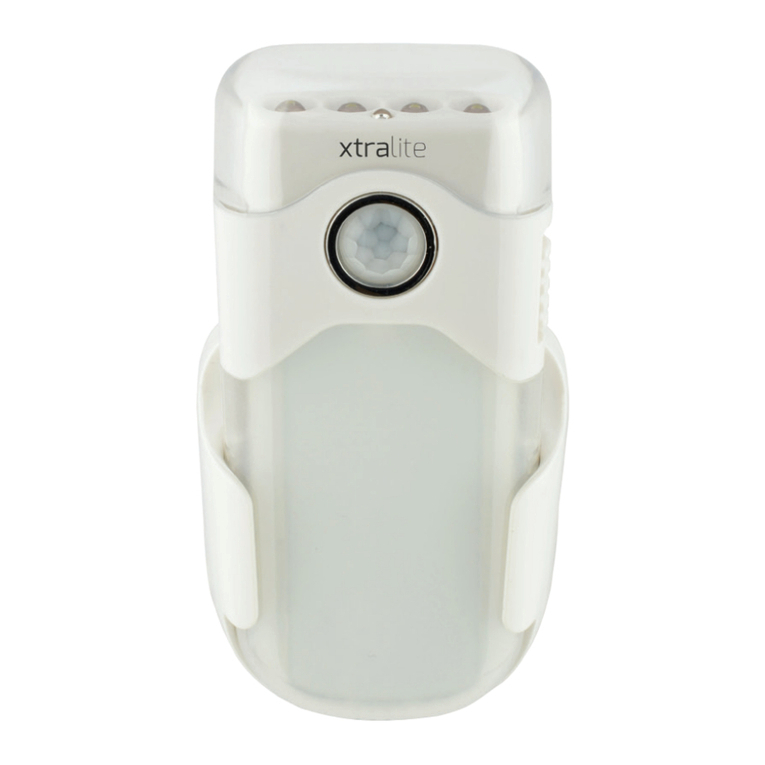
Xtralite
Xtralite NiteSafe user manual
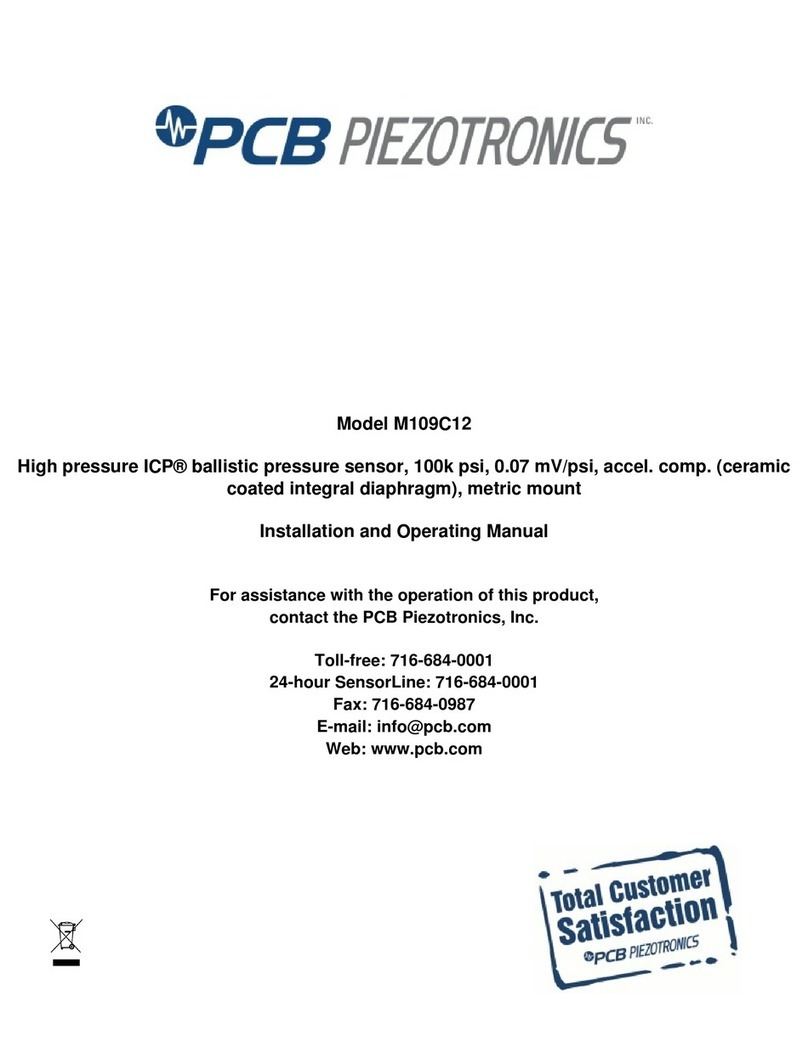
PCB Piezotronics
PCB Piezotronics ICP M109C12 Installation and operating manual
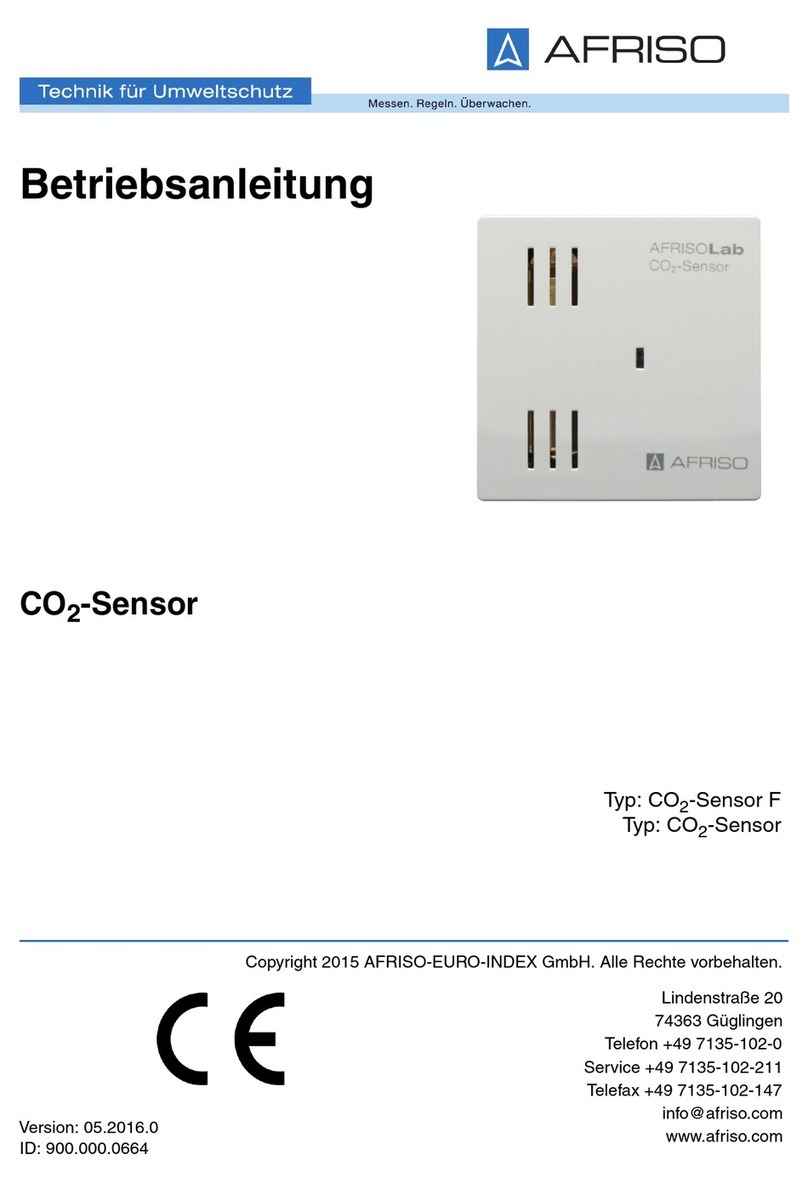
AFRISO
AFRISO CO2-Sensor F operating instructions
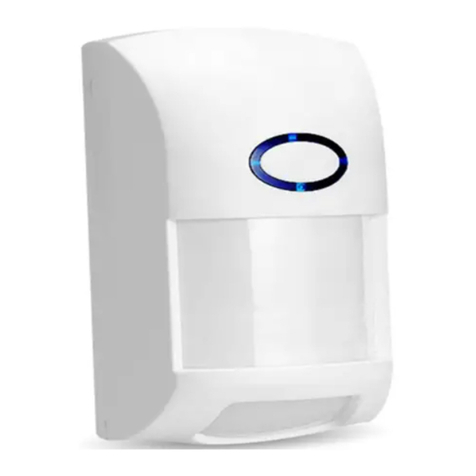
Universal Electronics
Universal Electronics H74426 Installation instructions and user manual

Dometic
Dometic 9200 Series installation instructions
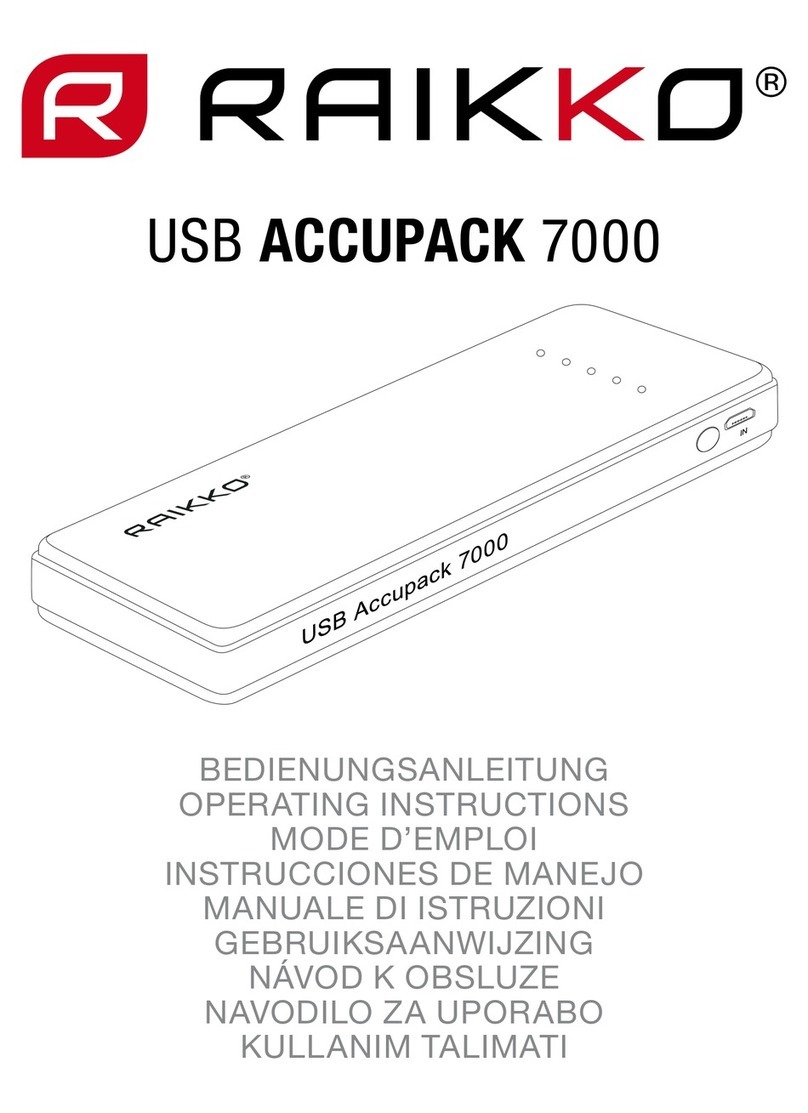
Raikko
Raikko ACCUPACK 7000 operating instructions
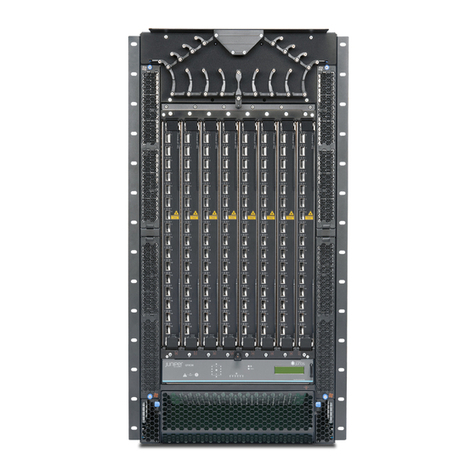
Juniper
Juniper QFabric QFX3008-I quick start guide

Heckler Design
Heckler Design H483 Assembly & installation
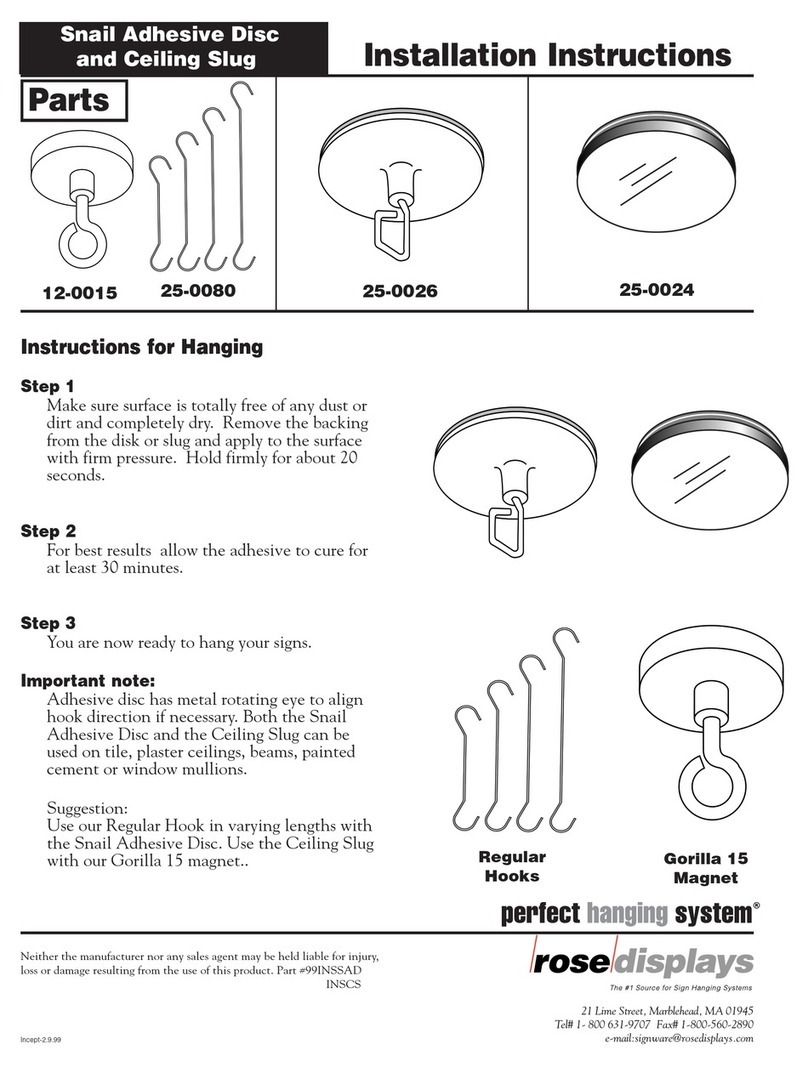
ROSE DISPLAYS
ROSE DISPLAYS SNAIL ADHESIVE WITH CEILING SLUG installation instructions

Perel
Perel EMS112 user manual

Dekko
Dekko ECA STO-WAY installation guide
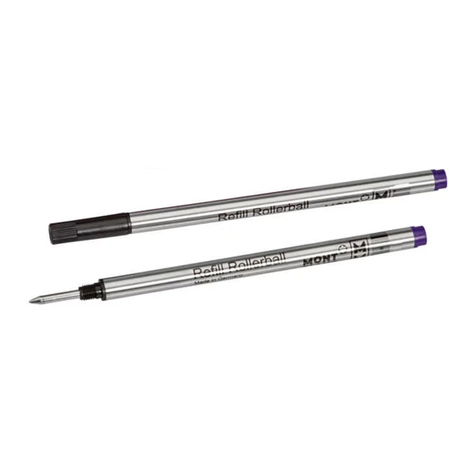
Mont Blanc
Mont Blanc Mystery Black Service guide
